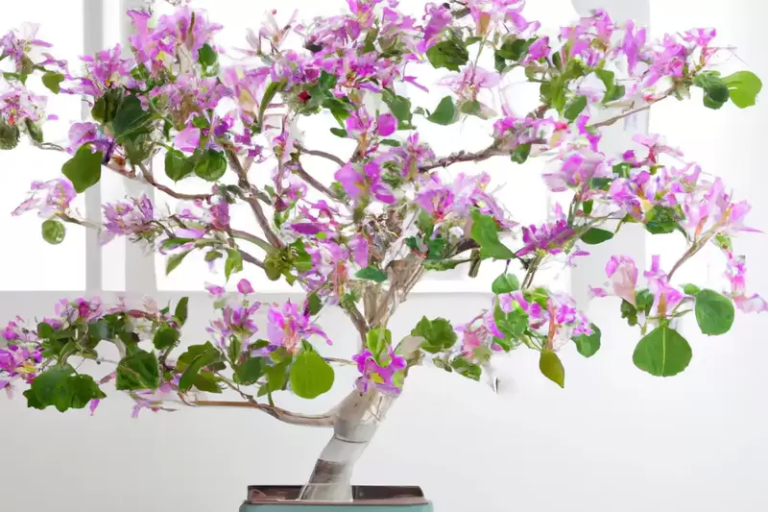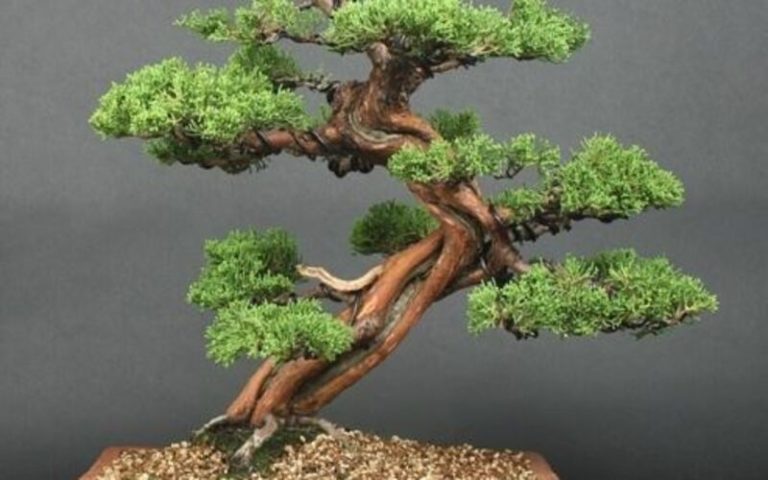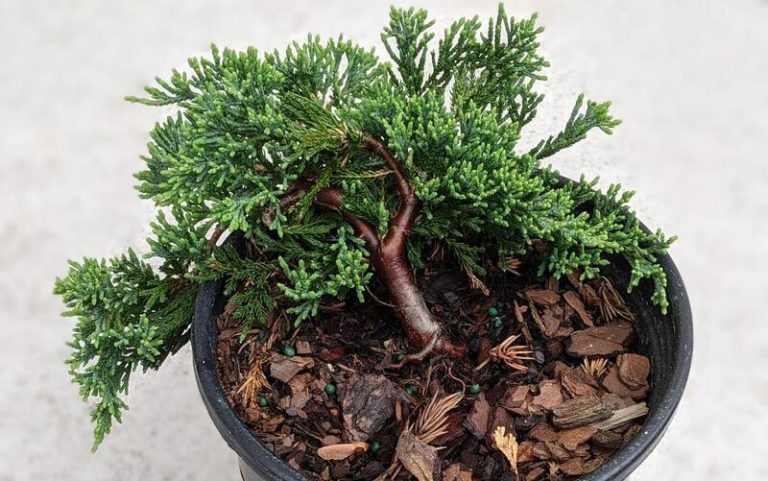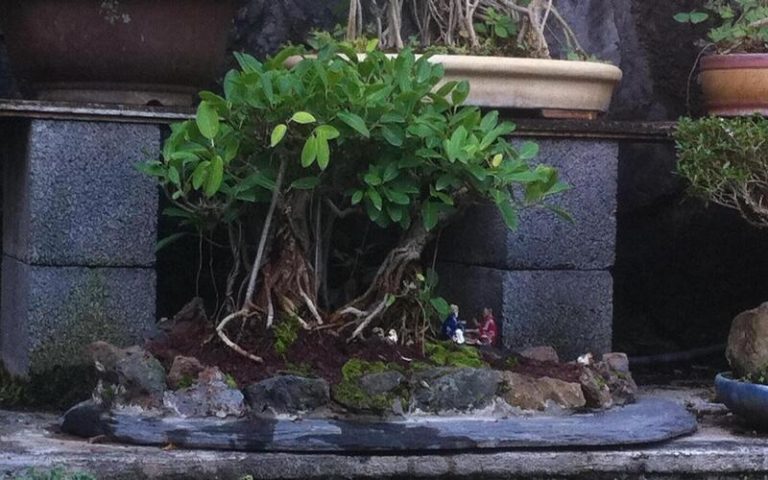Honeysuckle Bonsai : Uncovering the Symbolism Behind this Bonsai Tree
Honeysuckle Bonsai might be the perfect plant for your home if you want something pretty and easy to grow. Gardeners and bonsai fans are becoming more and more interested in this type of bonsai because of its unique beauty and ease of care.
What is Honeysuckle Bonsai?
A bonsai is a tiny tree cultivated in a container and groomed to grow into a small, attractive form. Honeysuckle Bonsai are bonsai trees built from the honeysuckle plant. The honeysuckle plant is popular among gardeners due to its beautiful blossoms and tasty nectar. Honeysuckle bonsai is an excellent method to appreciate the beauty and aroma of honeysuckle in a small, indoor space.
History and Origins of Honeysuckle Bonsai
Honeysuckle Bonsai trees are built from the honeysuckle plant. The honeysuckle plant, which is native to Europe, Asia, and North America, has a long history of usage in traditional medicine.
Bonsai, on the other hand, is a Japanese art form that dates back over a thousand years. The practice involves cultivating miniature trees that are trained to have a small, decorative shape. Bonsai is a symbol of Japanese culture and is revered for its beauty, simplicity, and harmony with nature.
The art of bonsai was brought to the Western world in the late nineteenth century, and it immediately became popular among artists and horticulturists. The first bonsai exhibits were conducted in the early twentieth century, and bonsai clubs and organizations were founded to promote the art form.
The practice of creating bonsai gardens using honeysuckle is a recent development. Growing honeysuckle as a bonsai is a relatively new tradition, despite the plant’s long history of usage in medicine and aesthetics. Honeysuckle is a great contender for bonsai development because to its singular beauty and pleasant scent.
As a result of its widespread popularity among bonsai enthusiasts, honeysuckle bonsai is now cultivated in countries all over the world. Bonsai’s historical and cultural significance make Honeysuckle Bonsai a great representation of the art form’s enduring appeal.
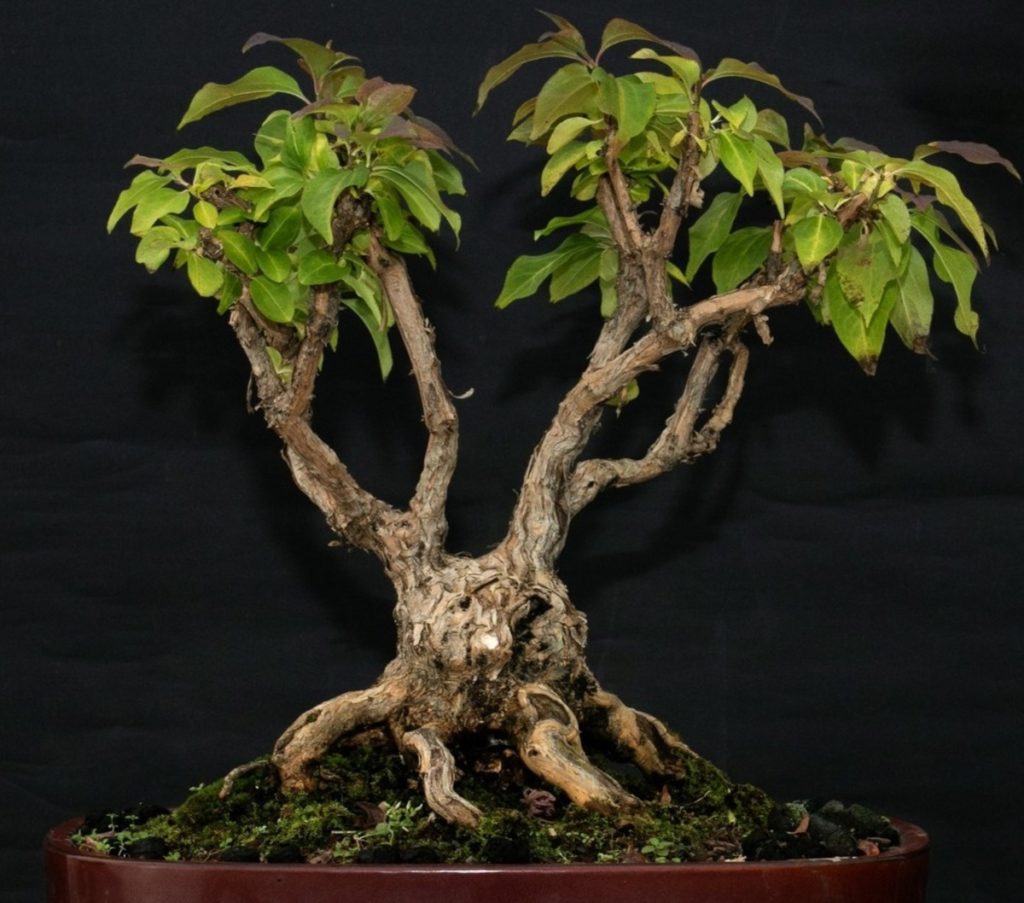
Honeysuckle Bonsai and Their Symbolism
In addition to its beauty and ease of care, Honeysuckle Bonsai also has a rich symbolic meaning in different cultures and traditions.
Bonsai is a symbol of peace, balance, and tranquillity in Japanese culture. Bonsai is a Japanese Zen Buddhist art form that stresses the significance of meditation, awareness, and harmony with nature. Honeysuckle Bonsai, in particular, is supposed to represent love and dedication, making it a favorite wedding and anniversary gift.
The Japanese view bonsai as a representation of peace, tranquility, and harmony. The Japanese Zen Buddhist principles of meditation, attentiveness, and harmony with nature provide the philosophical foundation of bonsai. In particular, honeysuckle bonsai is a popular choice as a wedding or anniversary present because of the meanings attached to these plants.
Honeysuckle is associated with the sweetness of life, pleasure, and contentment in Western culture. It is frequently found in gardens and parks, where its aromatic blossoms and delicious nectar attract birds, bees, and other pollinators. As a result, honeysuckle bonsai is frequently viewed as a symbol of pleasure, attractiveness, and happiness.
In various cultures and traditions, honeysuckle bonsai has a deep symbolic significance. Its beauty and fragrance make it a favorite among cultivators and bonsai devotees, while its symbolic significance adds an additional layer of meaning and depth to its allure. Whether you cultivate Honeysuckle Bonsai for its beauty, simplicity of care, or symbolic meaning, it is a delightful addition to any home or garden.
Characteristics of the Honeysuckle Bonsai
A Honeysuckle Bonsai is a miniature, ornamental tree that is cultivated in a container and trained to have a particular form. Here are some of its primary attributes:
- Size and Shape: Honeysuckle Bonsai is a miniature tree that typically grows between 8 and 10 inches tall. It is trained to have a dense canopy of foliage and branches and a round, compact form.
- Leaves: Honeysuckle Bonsai is a miniature tree with an average height of 8–10 inches. It is trained to have a compact, cylindrical form with a dense leaf and branch canopy.
- Flowers: In the spring and summer, honeysuckle bonsai generates aromatic blossoms. The trumpet-shaped flowers are available in a range of hues, including white, yellow, pink, and red.
- Trunk and Bark: The trunk of Honeysuckle Bonsai is typically slender and has a smooth, grayish-brown bark. Over time, the bark may develop fissures and texture, adding to the tree’s character.
- Care and Maintenance: Honeysuckle Bonsai is relatively easy to care for and maintain. It requires regular watering, fertilization, and pruning to maintain its shape and promote healthy growth. It also needs to be protected from extreme temperatures and pests.
A tiny, ornamental tree with fragrant blooms, glossy foliage, and a compact, rounded form is called a honeysuckle bonsai. Both novice and seasoned bonsai fans will find it to be an excellent choice because it is simple to maintain and care for.
Types of Honeysuckle Bonsai
Several varieties of honeysuckle may be taught to grow into bonsai trees. Some of the most popular varieties of honeysuckle bonsai are listed below:
Japanese Honeysuckle (Lonicera japonica): This type of honeysuckle is native to East Asia and is one of the most popular choices for bonsai cultivation. It has dark green leaves and produces fragrant white or yellow flowers in the summer.
Trumpet Honeysuckle (Lonicera sempervirens): This North American native has long, tubular flowers that come in shades of red, pink, orange, and yellow. It has a spreading growth habit and produces small, dark green leaves.
Italian Honeysuckle (Lonicera caprifolium): This European native has light green leaves and produces fragrant white or pink flowers in the spring. It has a dense, spreading growth habit and is an ideal choice for bonsai enthusiasts who prefer a fuller, more rounded shape.
Woodbine Honeysuckle (Lonicera periclymenum): This European native has fragrant white or pink flowers and dark green leaves that turn yellow in the fall. It has a climbing growth habit and is often trained into a cascade-style bonsai tree.
Coral Honeysuckle (Lonicera sempervirens ‘Major Wheeler’): This North American native features vivid red, trumpet-shaped blooms that bloom all summer. It features dark green leaves and a vine-like growth habit, making it an excellent choice for bonsai fans who desire a more natural, organic design.
Several species of honeysuckle, all with its own quirks and ways of growing that make them ideal for Bonsai creation, are available. Bonsai fans may build stunning, one-of-a-kind Honeysuckle Bonsai trees with careful consideration of the honeysuckle variety they choose and the bonsai techniques they employ.
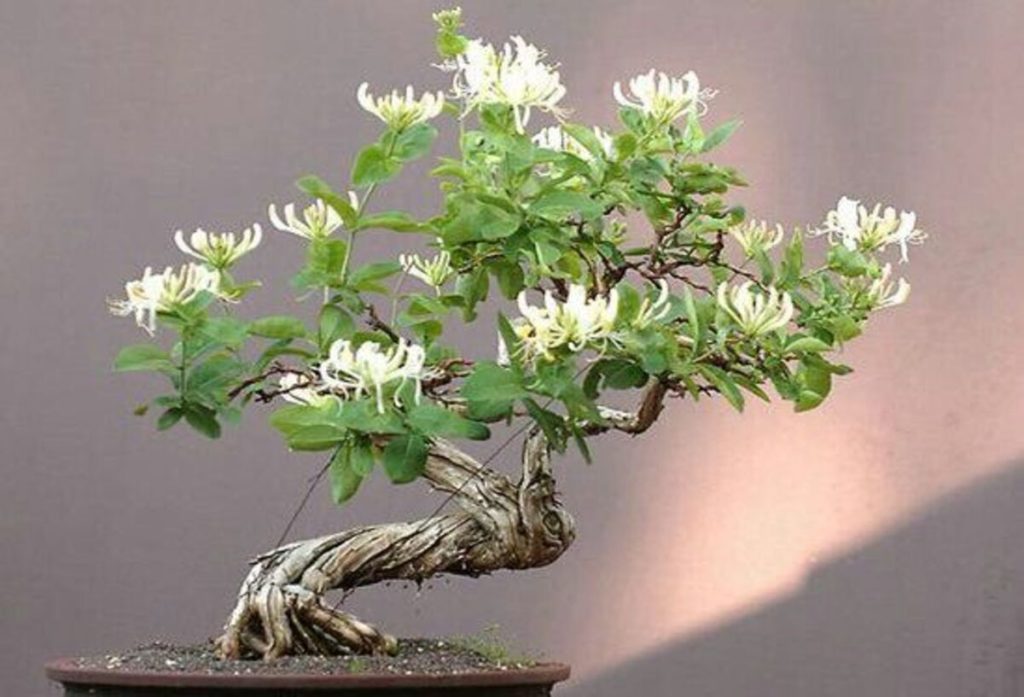
How to Grow a Honeysuckle Bonsai
Patience, attention to detail, and correct care are required when growing a Honeysuckle Bonsai. Here are the fundamentals of developing a Honeysuckle Bonsai:
Choose the right honeysuckle variety: The Japanese honeysuckle, Trumpet honeysuckle, or Italian honeysuckle are among the honeysuckle varieties that are suitable for bonsai maintenance.
Choose the right container: Choose a container that is appropriate in size and style for your honeysuckle plant. Bonsai containers should have drainage holes at the bottom to prevent waterlogging.
Prune the plant: Prune the honeysuckle plant to remove any dead or damaged branches and to shape the tree according to your desired style. Use sharp pruning shears to make clean cuts.
Repot the plant: Every two to three years, repot the Honeysuckle Bonsai into fresh, well-draining soil. This will help promote healthy root growth and prevent the plant from becoming root-bound.
Water the plant: Water the Honeysuckle Bonsai on a regular basis, but be cautious not to overwater it. Honeysuckle enjoys somewhat moist soil, but too much moisture might cause root rot.
Fertilize the plant: Use a balanced, water-soluble fertilizer to feed the Honeysuckle Bonsai during the growing season. Be sure to follow the manufacturer’s instructions for proper dosage and application.
Protect the plant: Honeysuckle Bonsai is susceptible to pests and diseases like as powdery mildew. Take precautionary precautions to safeguard your plant, such as monitoring it on a regular basis for symptoms of pests or disease and treating it as soon as possible if required.
Growing a Honeysuckle Bonsai involves careful selection, trimming, repotting, watering, feeding, and pest and disease control. You may enjoy the beauty and charm of a Honeysuckle Bonsai tree for years to come if you follow these simple instructions and use good bonsai methods.
Benefits of Honeysuckle Bonsai
Honeysuckle Bonsai not only adds aesthetic value to your home or garden, but also provides numerous benefits. The following are some benefits of cultivating Honeysuckle Bonsai:
- Air Purification: Honeysuckle Bonsai is renowned for its air-purifying properties. It removes ambient pollutants and contaminants, making the air you and your family breathe healthier.
- Stress Reduction: Bonsai cultivation is known for its therapeutic benefits. The act of caring for a Honeysuckle Bonsai can help reduce stress and anxiety and promote relaxation.
- Indoor and Outdoor Decoration: Bonsai of honeysuckle can be cultivated both indoors and outdoors. It can be utilized to enhance the natural attractiveness of your home, office, or garden.
- Fragrance: Honeysuckle Bonsai produces fragrant flowers that can fill your home or garden with a sweet aroma.
- Symbolism: Honeysuckle is a symbol of affection, contentment, and good fortune in numerous cultures. Possessing a Honeysuckle Bonsai in your home or garden can aid in attracting positive energy and good fortune.
Honeysuckle Bonsai offers several benefits, including air purification, stress reduction, decoration, fragrance, and symbolism. By growing a Honeysuckle Bonsai, you can enjoy these benefits and add natural beauty and positive energy to your surroundings.
Styling and Design of Honeysuckle Bonsai
Styling and designing a Honeysuckle Bonsai involves shaping the tree into a specific form that is aesthetically pleasing and in harmony with its surroundings. Here are some tips for styling and designing your Honeysuckle Bonsai:
Choose a style: Bonsai styles include formal upright, informal upright, slanted, cascade, and semi-cascade. Choose a design that reflects your personal preferences and the setting in which the bonsai will be displayed.
Prune regularly: Regular pruning is necessary to maintain the shape of your Honeysuckle Bonsai. Use sharp pruning shears to make clean cuts, and remove any branches that detract from the overall shape of the tree.
Wire the branches: Wiring is a technique used to shape and direct the growth of the branches. Use bonsai wire to wrap around the branches and gently bend them into the desired shape. Be careful not to damage the bark or break the branches.
Use accent plants and rocks: Accent plants and rocks can be used to enhance the overall design of your Honeysuckle Bonsai. Select plants and rocks that are in proportion to the size of the bonsai and add interest and depth to the display.
Consider the environment: When designing your Honeysuckle Bonsai, consider the environment in which it will be displayed. Choose a container and accent plants that complement the colors and textures of the surrounding décor.
Styling and designing a Honeysuckle Bonsai involves choosing a style, regular pruning, wiring the branches, using accent plants and rocks, and considering the environment. By applying these techniques and following your personal taste, you can create a beautiful and harmonious Honeysuckle Bonsai display.
How to Care for and Maintain Honeysuckle Bonsai
Caring for and maintaining a Honeysuckle Bonsai requires a regular routine of watering, fertilizing, pruning, and monitoring for pests and diseases. Here are some tips for caring for and maintaining your Honeysuckle Bonsai:
- Watering: Honeysuckle Bonsai should be watered when the soil becomes dry. Use a watering can or hose with a fine nozzle to water the tree gently, being careful not to dislodge the soil or damage the roots. Ensure that the water drains out of the container, and never allow the tree to sit in standing water.
- Fertilizing: Honeysuckle Bonsai requires regular fertilization to maintain healthy growth. Use a balanced fertilizer specifically designed for bonsai, and follow the instructions on the package. Fertilize once a month during the growing season and reduce frequency during the dormant season.
- Pruning: The Honeysuckle Bonsai requires regular pruning to preserve its shape and health. Remove deceased or damaged branches and thin out dense growth with pruning shears. To preserve the desirable shape, prune back new growth.
- Pests and diseases: Monitor the Honeysuckle Bonsai regularly for signs of pests or diseases. Common pests include scale insects, spider mites, and aphids. Use organic or chemical pesticides as necessary, following the instructions carefully.
- Repotting: Honeysuckle Bonsai should be repotted every 2-3 years to refresh the soil and provide room for root growth. Use a bonsai-specific soil mix and ensure that the roots are not damaged during the repotting process.
A Honeysuckle Bonsai needs frequent watering, feeding, trimming, pest and disease inspection, and repotting every two to three years in order to be cared for and maintained. You may maintain the health and vigor of your honeysuckle bonsai for many years by using the advice in this article.
Honeysuckle Bonsai Care Sheet
| Aspect | Care Tips |
| Watering | Water the tree when the soil becomes dry and ensure proper drainage. |
| Fertilizing | Fertilize once a month during the growing season with a bonsai-specific fertilizer. |
| Pruning | Prune regularly to maintain shape and health, and cut back new growth. |
| Pests and diseases | Monitor for pests and diseases regularly, and use organic or chemical pesticides as necessary. |
| Repotting | Repot every 2-3 years with a bonsai-specific soil mix, being careful not to damage the roots. |
Conclusion
Any bonsai collection would benefit from the addition of some fragrant honeysuckle bonsai. Bonsai aficionados all around the globe choose it because of its beautiful leaves, delicate blossoms, and significant symbolic value. The spectacular results are well worth the extra care and attention it may demand compared to other types of bonsai.
Keeping your Honeysuckle Bonsai healthy, well-styled, and happy will ensure that you can admire it for years to come. No matter how much or how little experience you have with bonsai, Honeysuckle Bonsai is an essential addition to your library.
FAQ:
Q: What is Honeysuckle Bonsai?
A: Honeysuckle Bonsai is a type of bonsai tree that is renowned for its fragrant blossoms and lovely foliage. It belongs to the Lonicera family.
Q: Can Honeysuckle Bonsai be grown indoors?
A: Yes, Honeysuckle Bonsai can be grown indoors, but they need bright indirect sunlight and proper ventilation.
Q: How often should I water my Honeysuckle Bonsai?
A: Watering frequency depends on the environment and climate. Water when the soil becomes dry and ensure proper drainage.
Q: What type of soil should I use for my Honeysuckle Bonsai?
A: A well-draining bonsai-specific soil mix is recommended for Honeysuckle Bonsai.
Q: How do I prune my Honeysuckle Bonsai?
A: Regular pruning is necessary to maintain the shape and health of the Honeysuckle Bonsai. Use sharp pruning shears to remove dead or damaged branches and thin out dense growth. Cut back new growth to maintain the desired shape.
Q: What are the common pests and diseases that affect Honeysuckle Bonsai?
A: Common pests that affect Honeysuckle Bonsai include scale insects, spider mites, and aphids. Diseases that can affect them include powdery mildew and root rot.
Q: How often should I fertilize my Honeysuckle Bonsai?
A: Fertilize once a month during the growing season with a bonsai-specific fertilizer and reduce frequency during the dormant season.
Also Read:





